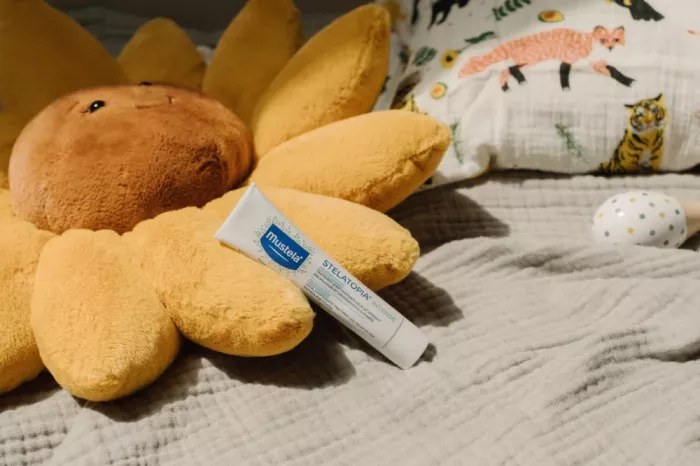Stelatopia is a term that many parents may not be familiar with, but it is essential to understand it, especially if your child suffers from sensitive skin. This condition is part of a broader category of skin issues, often linked to atopic dermatitis or eczema. In this article, we will explore what Stelatopia is, its symptoms, causes, and how to manage it effectively.
What is Stelatopia?
Stelatopia is a skincare range developed specifically for babies and children with dry and atopic skin. It is designed to help soothe and protect sensitive skin. The products in the Stelatopia range are often recommended by dermatologists and pediatricians for their gentle and effective ingredients.
The Stelatopia range includes moisturizers, cleansers, and other topical treatments. These products aim to hydrate the skin and restore its barrier function. The goal is to alleviate dryness and irritation, making life more comfortable for little ones.
Symptoms of Stelatopia
Identifying Stelatopia involves recognizing its symptoms. The primary signs of sensitive skin may include:
- Dry patches that can appear anywhere on the body
- Redness or inflammation, especially in areas prone to rubbing or friction
- Itching that may lead to scratching, worsening the condition
- Flakiness or scaling of the skin
These symptoms can vary in severity. Some children may experience mild dryness, while others may have more pronounced symptoms requiring medical attention.
Causes of Stelatopia
Understanding the causes of Stelatopia is crucial for effective management. The primary factors contributing to this condition include:
Genetics: Children with a family history of eczema or allergies may be more likely to develop sensitive skin.
Environmental Factors: Changes in weather, exposure to harsh soaps, or allergens can exacerbate the condition.
Skin Barrier Dysfunction: The skin barrier in atopic individuals is often compromised. This leads to increased water loss and allows irritants to penetrate the skin.
Irritants and Allergens: Common triggers include dust mites, pet dander, pollen, and certain fabrics like wool. These can worsen symptoms and lead to flare-ups.
Diagnosis of Stelatopia
Diagnosing Stelatopia typically involves a visit to a pediatrician or dermatologist. They will assess the child’s skin, review their medical history, and ask about any family history of skin conditions. In some cases, allergy tests may be performed to identify specific triggers.
It is essential to provide your healthcare provider with as much information as possible. This includes when the symptoms first appeared, any changes in the child’s environment, and how the skin responds to different treatments.
Managing Stelatopia
Managing Stelatopia effectively involves a combination of skincare routines, lifestyle changes, and possibly medication. Here are some practical tips for parents:
1. Daily Skincare Routine
Establishing a daily skincare routine is vital. Use gentle, fragrance-free products that are formulated for sensitive skin. Look for creams and lotions that contain emollients, which help to lock in moisture.
Bathing: Keep baths short and use lukewarm water. Avoid using harsh soaps. Instead, choose mild cleansers designed for sensitive skin.
Moisturizing: Apply moisturizer immediately after bathing while the skin is still damp. This helps to seal in moisture. Reapply throughout the day as needed.
2. Clothing Choices
Choose soft, breathable fabrics for your child’s clothing. Cotton is often the best choice as it is less irritating than synthetic fabrics. Avoid wool and rough materials that can cause itching.
Laundry Care: Use mild, fragrance-free detergents when washing your child’s clothes. Rinse thoroughly to remove any soap residue.
3. Environmental Control
Monitor your child’s environment for potential allergens. Regularly clean your home to reduce dust mites and pet dander. Use air purifiers if necessary.
Temperature and Humidity: Maintain a comfortable temperature and humidity level in your home. This can help prevent skin from becoming too dry or too moist.
4. Medication
In some cases, your healthcare provider may recommend topical corticosteroids to manage inflammation and reduce itching. Follow the doctor’s instructions carefully regarding application frequency and duration.
Oral Medications: For severe cases, antihistamines or other medications may be necessary. Discuss these options with your child’s doctor.
When to Seek Medical Help
While many cases of Stelatopia can be managed at home, there are times when professional help is needed. If your child’s symptoms worsen or do not improve with home care, it is essential to seek medical advice. Signs that warrant a doctor’s visit include:
- Severe itching that interferes with sleep
- Widespread redness or swelling
- Signs of infection, such as pus or increased warmth in the affected area
Support for Parents
Dealing with Stelatopia can be challenging for parents. It is important to seek support when needed. Joining support groups, either online or in-person, can provide valuable information and reassurance. Sharing experiences with other parents facing similar challenges can help you feel less isolated.
Conclusion
Stelatopia is a condition that affects many children with sensitive skin. Understanding its symptoms, causes, and management strategies is crucial for parents. By implementing a gentle skincare routine, making appropriate lifestyle changes, and seeking medical advice when necessary, you can help your child feel more comfortable.
Always consult with a healthcare professional before starting any new treatments. With the right care and attention, children with Stelatopia can lead happy, healthy lives. Remember, you are not alone in this journey, and support is available.
Related topics:


